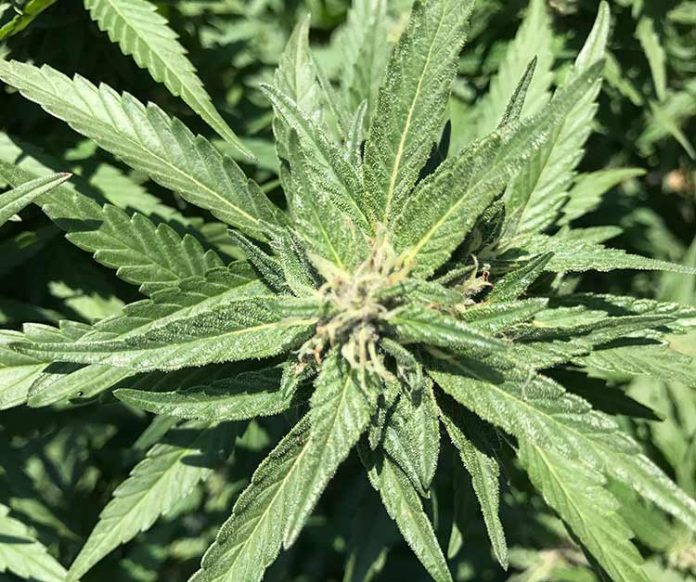As a drug prevention specialist who does in-school presentations in the U.S., as well as internationally, Zach Levin has seen the problem firsthand: Teens know that recreational use is legal in states such as Colorado and that medical use is on the rise, and they’re using that information to support the old argument that a little weed never hurt anyone.
And starting today, Illinois teens have one more argument: In a symbolic win for legalization forces that did not change local laws, Cook County residents voted in favor of legalizing recreational marijuana use by a wide margin Tuesday, with 68 percent in favor and 32 percent against.
So how do you, as a parent, prepare to talk about marijuana with your kids in the age of legalization?
“The biggest thing that I tell parents is that first they need to talk. I think there’s been a lot of fear around even having the conversation,” said Levin, who is also the supervisor of structured recovery housing at Hazelden Betty Ford in Chicago.
“And I think the second most important thing is to deliver healthy facts. Parents need to get familiar with what those are. Some already know them; (they) just need help on delivering those facts to their children, because they think now we’re living in this era where a lot of teenagers have access to the internet. You can go on Google, you can go on Twitter and you see a lot of glamorization and misinformation regarding marijuana, so it’s important for parents to have the right facts.”
Among the facts emphasized at one trusted resource, the National Institute on Drug Abuse website:
• Marijuana can be addictive. Research indicates that about 9 percent of users develop addictions.
• Using and driving is unsafe. Marijuana is the most common illegal drug identified in deadly car crashes and is thought to roughly double your chance of being involved in a crash.
• Marijuana is linked to lower grades. Pot has negative effects on attention, motivation and memory. In recent research, heavy teen users who continued on to become very heavy users as adults lost an average of 6 IQ points by mid-adulthood.
• Marijuana is linked to some mental illnesses. There’s some evidence that early use may increase psychotic disorders among those already at genetic risk.
Levin says some basic information about the adolescent brain can also be helpful when addressing teens.
“When I go to schools, I’m dealing with students 13 to 18 who are thinking that maybe because legalization is happening in their state, (it’s safe). So we have to get clear on just because something’s been legalized — it might actually be very harmful to the brain if it’s still developing,” he said.
“I have to do a little education on neuroscience and get them to see that the adolescent brain is not fully developed, and it’s developing throughout adolescence and, in some cases, well beyond. It’s getting them to understand what are some of the last parts to develop, so maybe taking a look at the frontal lobe and what that’s responsible for: decision-making, impulse control. They can start to see what’s going on. They can understand that marijuana can be harmful to learning, thinking, memory development.”
As for the talk itself, he recommends that parents start by asking a simple question or two: What have you heard about drugs? Is there anything you’re curious about? There’s no need to talk about marijuana separately from other drugs, but be ready for some unique legalization-era issues.
If a kid brings up objections such as, what about “Uncle Harry’s medical marijuana?” or “What about Colorado?” a “social norms” approach may be helpful, Levin said. Surveys show that the majority of teens are not using — something kids may not know because users tend to speak more loudly and passionately than nonusers.
Marijuana use among students in eighth grade and high school rose by 1.3 percentage points to 23.9 percent in 2017, according to a recent report from the annual survey Monitoring the Future. About 10 percent of eighth-graders had used marijuana in the past year, and about 37 percent of 12th-graders (versus 51 percent in 1979).
And what if your independent teen says he or she doesn’t care what the majority does? Well, good for her, Levin says, but realistically, most of us do follow the herd to some extent, often without knowing it.
In his school presentations, he sometimes makes this point by shifting away from drugs entirely and talking about media and marketing.
“I’ve had everyone take a look at the gym shoes that they’re wearing. And I ask them to really take inventory of why they purchased the shoes that they’re wearing, and never have I heard a student who has said ‘Well, Zach, this shoe, I did a lot of research — it’s extremely supportive; it’s a great walking shoe,’” Levin said.
“Often we’re hearing about the Nike swish logo or that the Uggs looked really good in the store. That’s often how we make decisions — it’s even true of adults. So when we have the misinformation, or when we have the minority speaking very loudly, there is some effect on our decision-making.”














